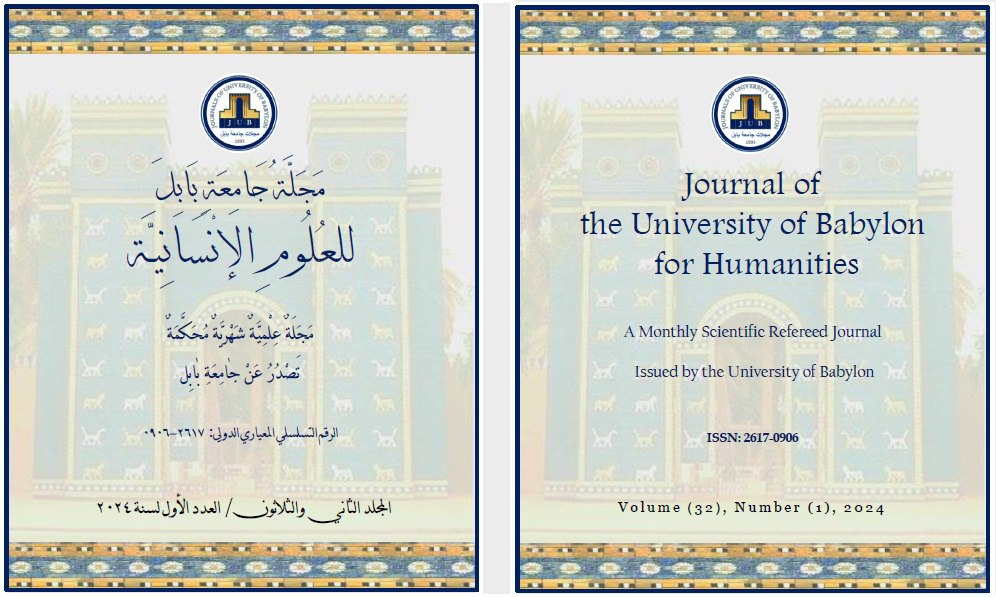Conceptual Blending in An Era of Glass: a Play by Muhammad Sabri Saleh.
Main Article Content
Abstract
The theory of conceptual blending is considered an important field of human knowledge that is widely attended in global scientific circles, by describing conceptual blending as the direction of a principle of human processes through which humanity works to create new relationships and associative links to reach new meanings, and the goal of this final is completed by the idea. Its final goal is: to identify the method that people arrive at, which is nothing but the conceptual, so this research came to study an attempt to clarify the path of the contemporary Thai-Iraqi text, which continued us to identify the way through which the thought of the contemporary Iraqi writer flowed as he created his dramatic text, and others. The matter is with the recipient who receives the text by reading or watching and listening, and it has four chapters. The first chapter included research that revolved around the following question: What does the artistically defined text of the play A Time of Glass reveal about the technique of operating conceptual coherence - in the event that the text is produced or received - in order to arrive at the problem? The importance of the research, which was based on the theory of planning and the conceptual linking of its cognitive stations, in revealing what is going on in the mind of the playwright and receives it when they first create the text or follow it in relation to the second, and the benefit that is evident in this research will work to benefit scientific scholars and teachers in the basics of cognitive knowledge and those involved in the theatrical work of writing and creating it. The chapter identifies this goal behind conducting the current research, which focuses on analyzing the text of the play A Time of Glass in light of the theory of current conceptual combination on the path that the thought of the creator of this text takes or receives, along with the many mental conceptual tools in it through which he draws conclusions. The chapter also specifies the scope of the research: temporal, spatial, and thematic, in addition to mentioning the operational definition of the term contained in the title of the research.
The second chapter included two sections, in addition to mentioning the indicators covered by the theoretical framework. In the first research, the researcher investigated: The theory of conceptual association: the concept and mechanisms. In the second research, he investigated reading the theatrical text with the taste of the viewer of the text, based on the theory of conceptual association. The third chapter was devoted to the research executions, as the research play was identified, and it was represented by the text of the play (An Era of Glass) by (Mohamed Sabry Saleh), which was chosen in an intentional way and the (descriptive) user interface was adopted in analyzing that sample. As for the fourth chapter, it concluded The researcher contains the results of the sample analysis, provided that the researcher has committed himself at the end of his current research to provide a list of sources and references from which he has proven it.
Article Details

This work is licensed under a Creative Commons Attribution 4.0 International License.

